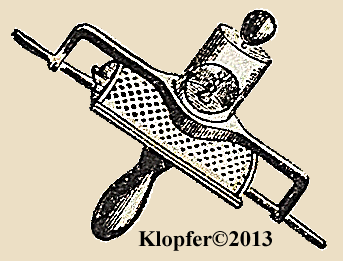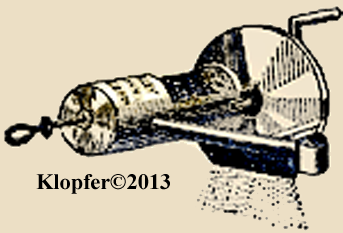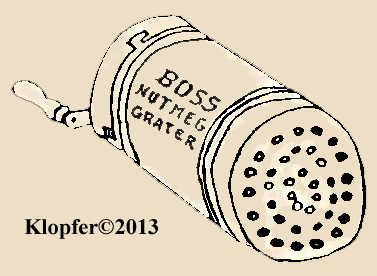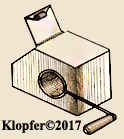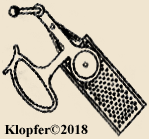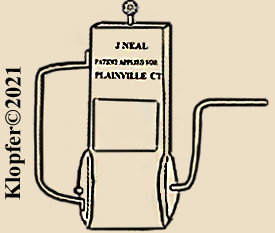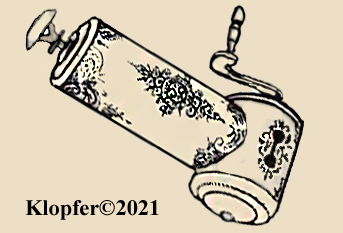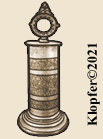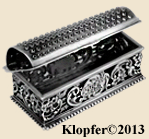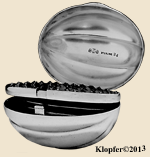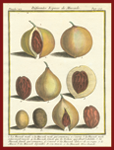
Click Me!
NutmegGraters.Com

- Home
- Featured Stories
- Picture Gallery
- Info.Wanted :
- Spurious Marks
- Trading Post
- Contact Our Site
- Wanted To Buy
[WELCOME: My articles published on NutmegGraters.Com and commercially (elsewhere) required many years of primary research, personal expense, travel and much effort to publish. This is provided for your enjoyment, it is required that if quoting my copyrighted text material, directly provide professionally appropriate references to me. Images are unavailable for copy. Thank you J. Klopfer.]
_______________________________________________________________________________________________________________________________________________________
The Biggest Success Of All ~ The Incredible "Edgar"
The fabulous Edgar mechanical nutmeg grater was the design of George H. Thomas of Chicopee Falls, Massachusetts, who patented his invention on August 18, 1891. An ingenious inventor, Thomas received royalties on numerous patents including a knitting machine, egg beaters, nutmeg graters and a pie turner. Less than four months after acquiring this, his last patent, Thomas died from consumption on December 11, 1891, at the age of 42. Fortunately, his design lived on.
Only months later, in September 1892, an illustrated advertisement from the opposite end of Massachusetts announced this nutmeg grater for sale by the Edgar Manufacturing Company located at 11 Harrison Street in Reading. The Edgar Manufacturing Company was organized in early 1892 by the Damon family. Since 1874, the three Damon brothers were very successful in the manufacture of neckwear and they added a nutmeg grater business to diversify their product line. Charles E. Damon, with brothers Albert P. and Arthur A., named both their new company and its nutmeg grater to honor their father Edgar Damon who was suffering from tuberculosis. Edgar died the next year, in 1893.
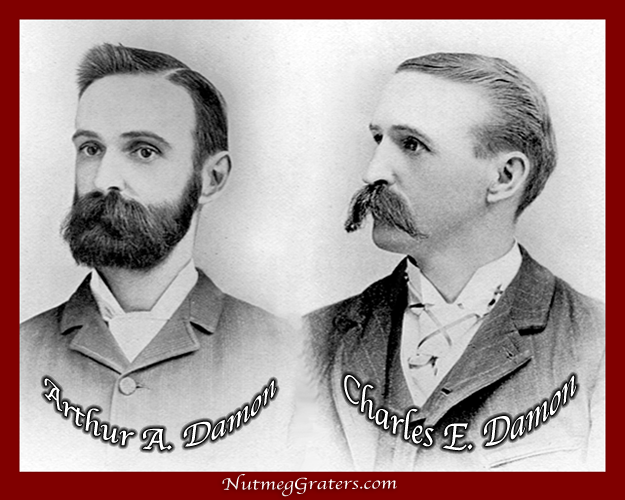
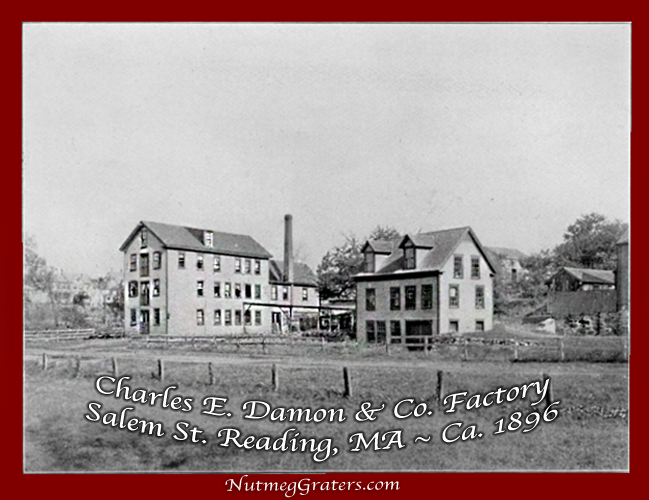
During its manufacture, three different nutmeg grater designs were produced (some collectors recognize the addition of wavy edged handles, occurring about 1903, as a fourth design). On November 10, 1896, Charles E. Damon secured a second patent for improvements in the Edgar nutmeg grater, resulting in the third (and the fourth) production model(s) [bottom image: below] . This patent simplified production methods, which improved profits while speeding productivity. However, the business's success was fleeting.
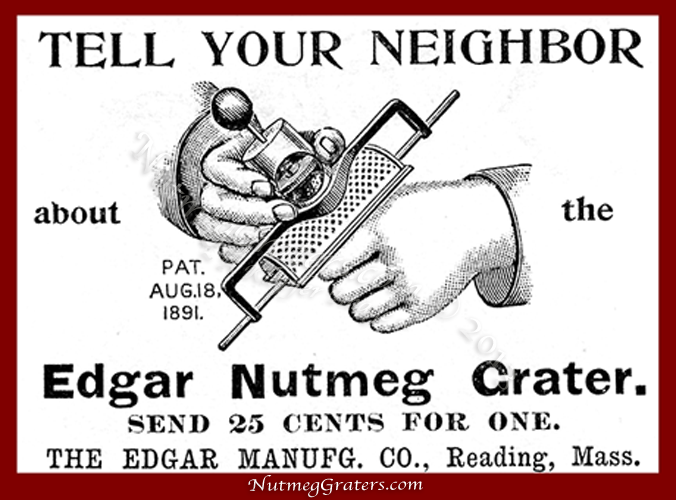
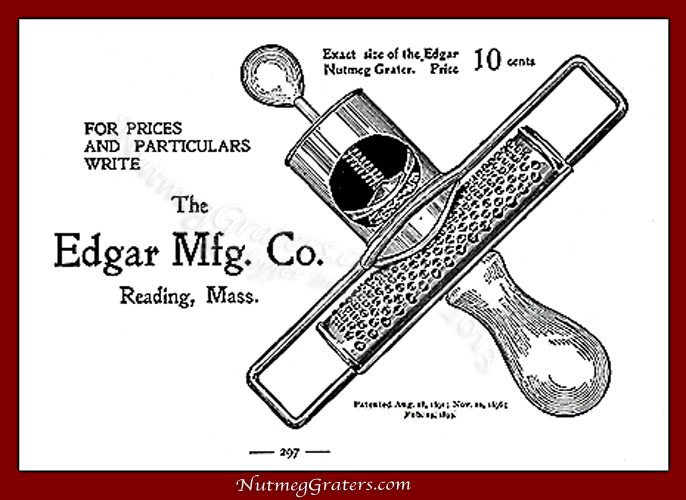
On May 10, 1902, public notices reported failure with both the C. E. Damon & Co. and the Edgar Manufacturing Company. Manufacturing operations of the nutmeg grater were continued by contract while the sale of these businesses was arranged. The final sales agreement for the Edgar Manufacturing Company was announced to the public on August 23, 1902, and by 1903 the business became known as the Wm. J. Bride Co. Instrumental with the transfer in ownership, Arthur Jewett made a business trip to New York in November 1902, where he secured orders for nearly 500 gross of graters. It was rumored that Jewett drew the line there for he was uncertain of the capacity of his newly owned factory to get any further orders out on time and as promised. By 1910, illustrations of the nutmeg grater were sometimes marketed under a new trade name, the "Automatic Nutmeg Grater". World War I probably interfered with business because no advertisements for the nutmeg grater have yet been located from this period. The Wm. J. Bride Co. is listed in city records through the year 1916, but no longer by the war's end in 1918, at which time it is presumed that the nutmeg grater was out of production. In this same year, Arthur Jewett died.
Being the most successfully produced mechanical nutmeg grater, the "Edgar" is the most commonly available for the modern collector.

Klopfer © 2003 (adapted text)
